This post may contain affiliate links. For more information, see our privacy policy.
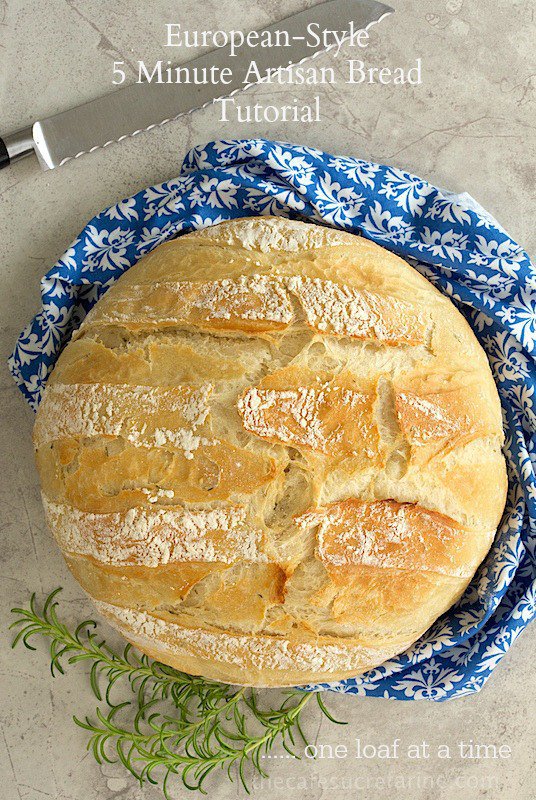
Do you ever run across something that you think is just too good to be true?
I'll never forget the first time I read about 5 Minute Artisan Bread. The loaves in the pictures looked like the came from a wonderful French or Italian bakery, the process sounded simple and the whole thing seemed way too good to be true. I'd made bread the traditional way for years, and knew it was a labor-intensive process requiring a fair amount of hands-on time. To say I was a skeptic was an understatement.
I also knew that yeast was a bit tricky and a bread recipe's success or failure was often dependent on a baker's "yeast competence". So when I read the recipe and discovered that you basically just throw everything in a large container, give it a stir and set it aside .......... well .... let's just say I was sure it wouldn't work.
I tried it and was shocked when, 45 minutes later, the dough had doubled in size. I followed the rest of the instructions carefully and before long the most wonderful aroma was emanating from my little (non-European) kitchen. When I pulled the rustic, golden-crusted loaf from the oven I did a happy dance because too-good-to-be-true was true!
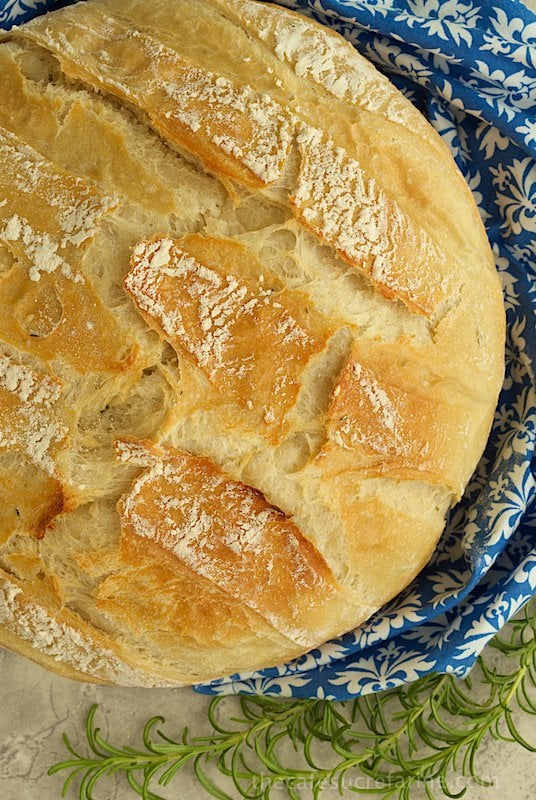
I've made this delicious bread quite frequently since then and, over the years, simplified and refined the process. The original recipe made a huge batch, requiring either baking three loaves at a time or having a fairly large refrigerator space to store the extra dough. I've scaled down the ingredients to yield just one nice size loaf and have adjusted the technique to make it easier.
Are you skeptical? It's okay, I understand. Nothing can be that easy, right? That's why I had Scott click some photos of the process so you could see for yourself. Try it, you'll become a believer, I promise. You can find the original recipe and method in the Artisan Bread in 5 Minutes book. Below is my simplified method.
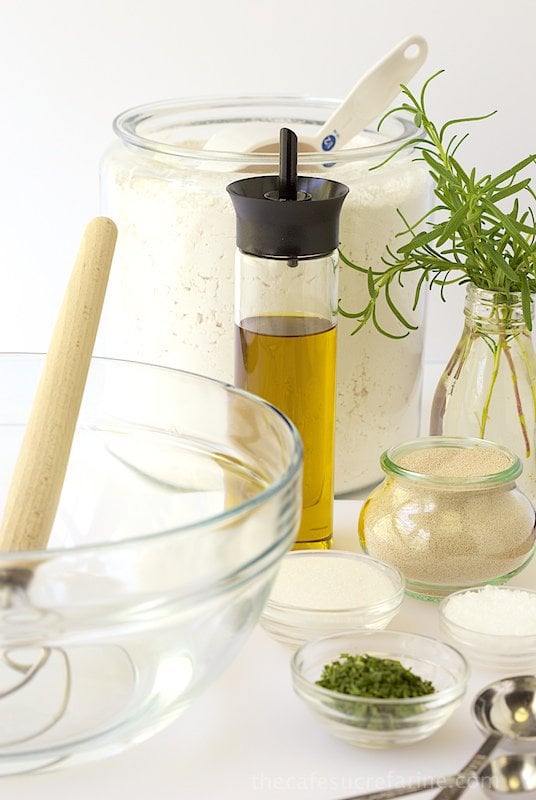
Gather the ingredients; a large bowl, some measuring spoons and cup. Be sure you have a sturdy wooden spoon or a whisk.
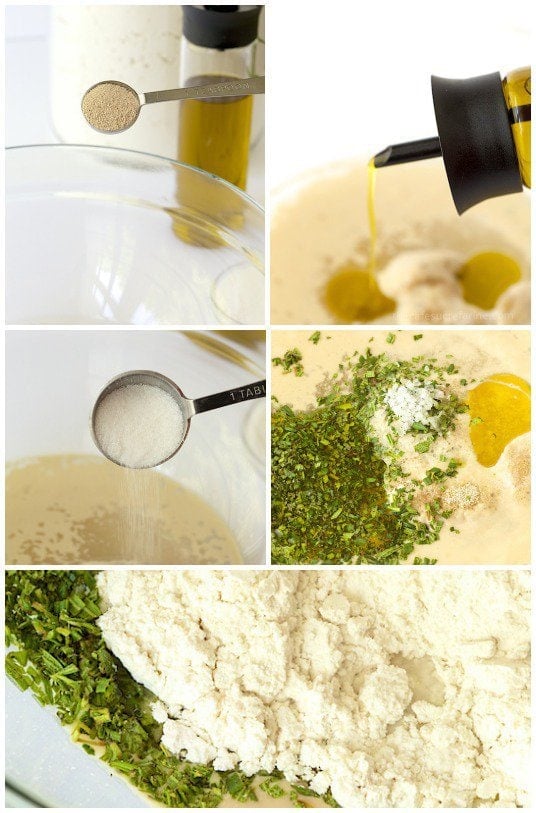
Add warm water to a large bowl. Stir in yeast and sugar. Let it sit for a few minutes, then add remaining ingredients.
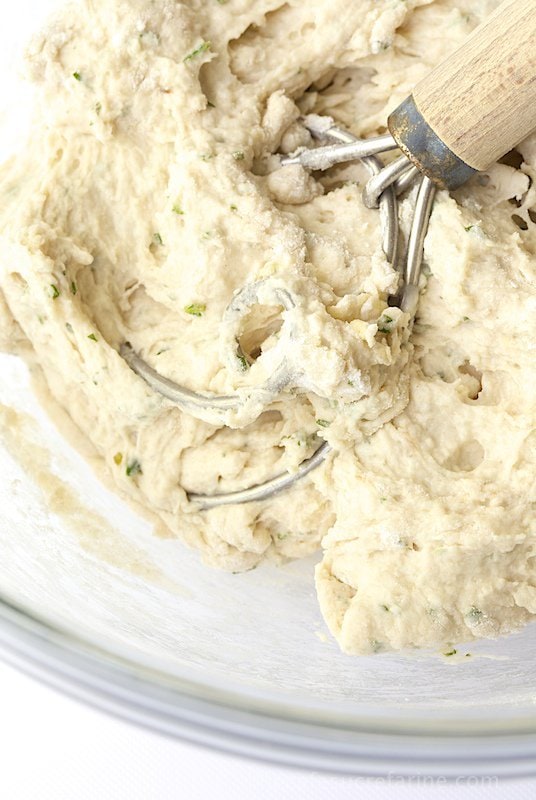
Mix until all of the flour is incorporated.

Cover loosely with plastic wrap and set aside.
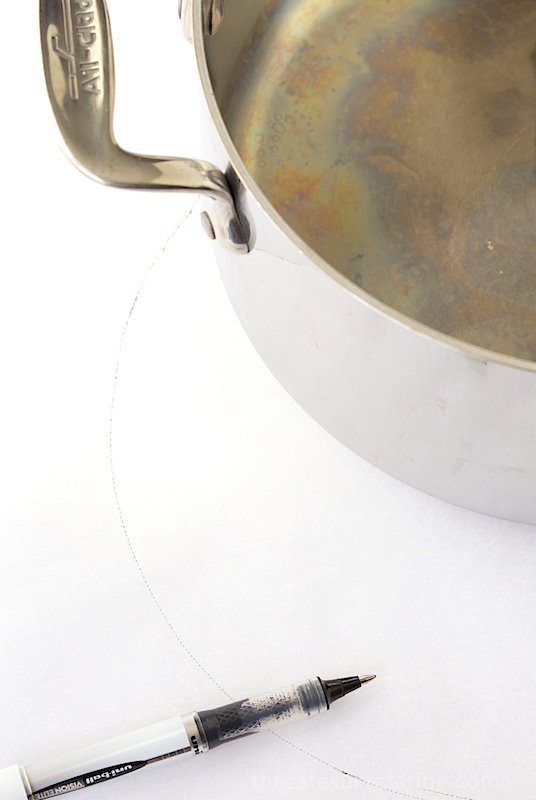
While the dough is rising, take a 3-4-quart pot (with or without a handle*) and place on top of a piece of parchment paper. Trace a circle, slightly bigger than the bottom of the pot. Cut out the parchment circle and set aside.

Sprinkle the bottom of the pan with 2 teaspoons of flour.
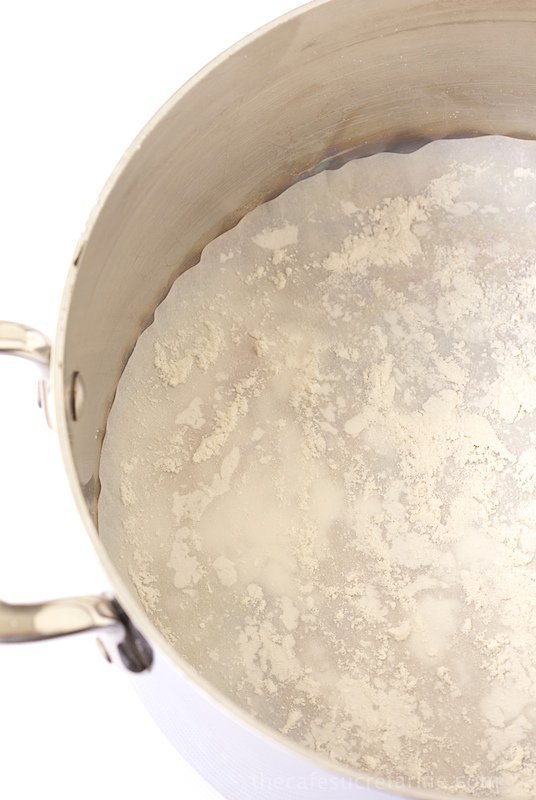
Fit the parchment circle into the bottom of the pan and sprinkle another teaspoon of flour over the paper. This will keep your bread from sticking to the pan and parchment paper. Set pot aside.
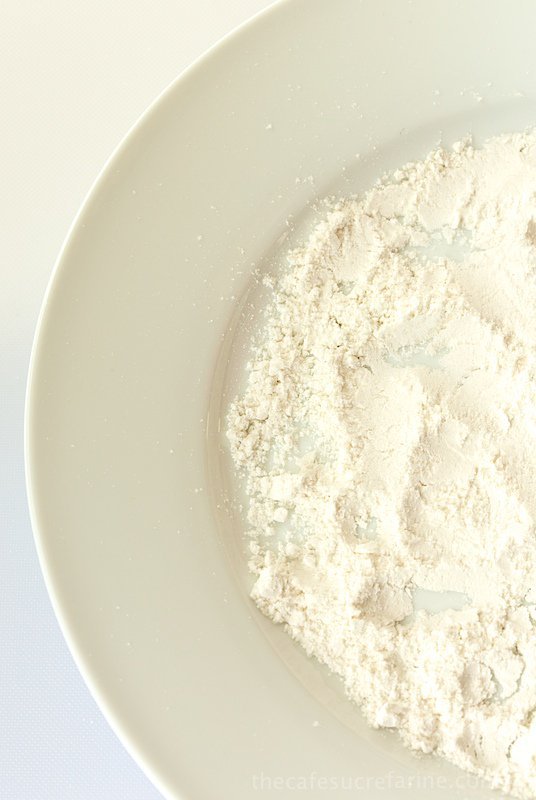
Spread out ¼ cup flour on a dinner plate.

Transfer dough to the floured plate. Flip several times to thoroughly coat dough with flour.
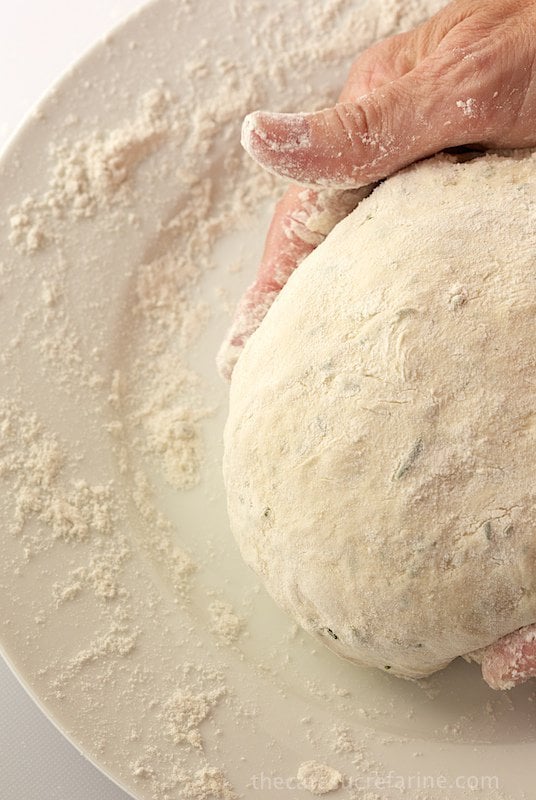
Shape into a smooth, flat ball by stretching the surface of the dough and tucking it underneath with the palms of your hands, rotating a quarter of a turn as you go.
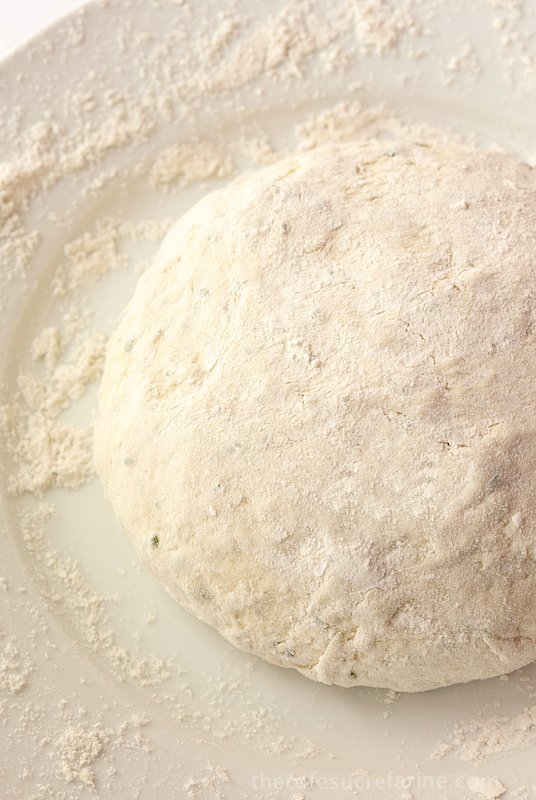
Dust with more flour from the plate as needed to prevent stickiness.
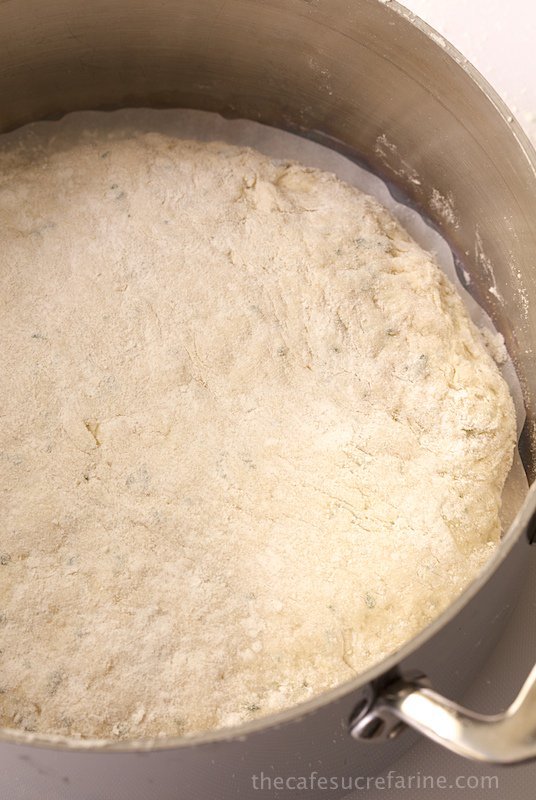
Transfer the ball of dough to the prepared pot and cover.
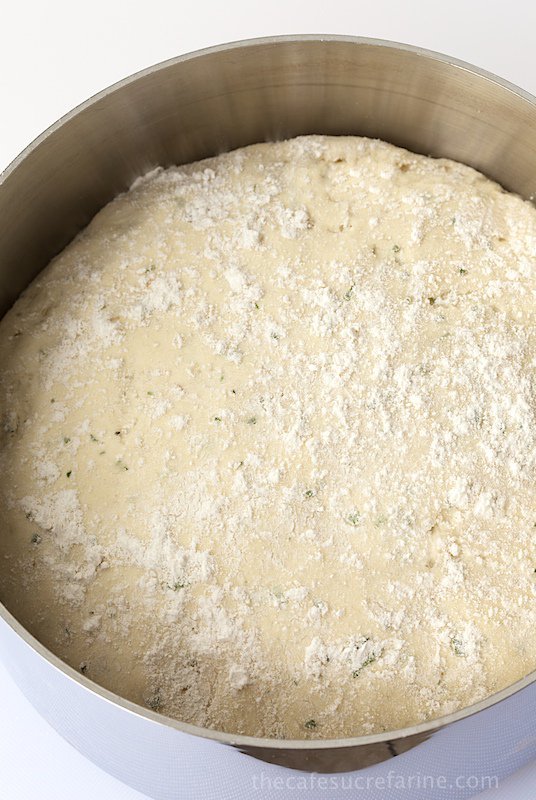
Let it rest for 30-40 minutes or until doubled in size. (Rising time will depend on how warm your kitchen is.) Then sprinkle the top with a bit more flour.
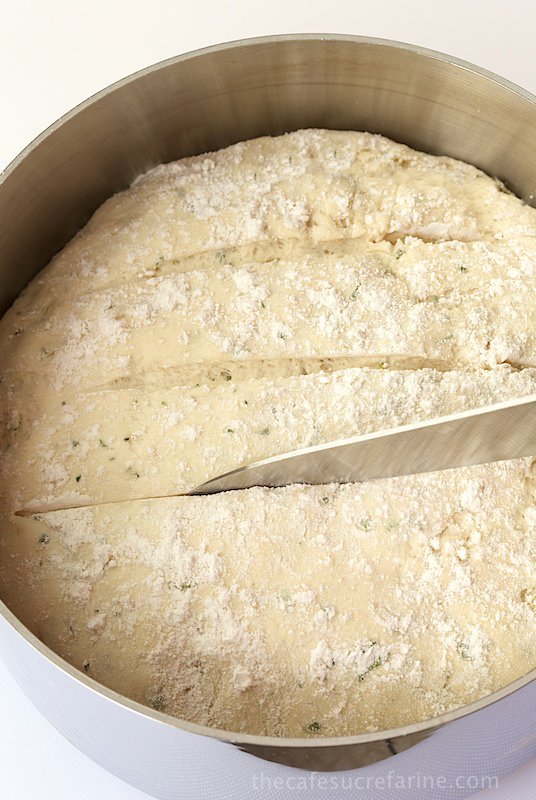
With a sharp knife make horizontal cuts across the top of the loaf. You can also cut an x (or just make little random cuts with a kitchen shears all over the top of the bread for a fun whimsical look.)
Now, cover on the pot and pop the whole thing in the oven.
Before long, unbelievable aromas will fill your kitchen. You'll flip when you open the oven door and see the rustic rounded top of the golden loaf peeking out of the pot. I'm quire certain you'll be doing a little happy dance too!
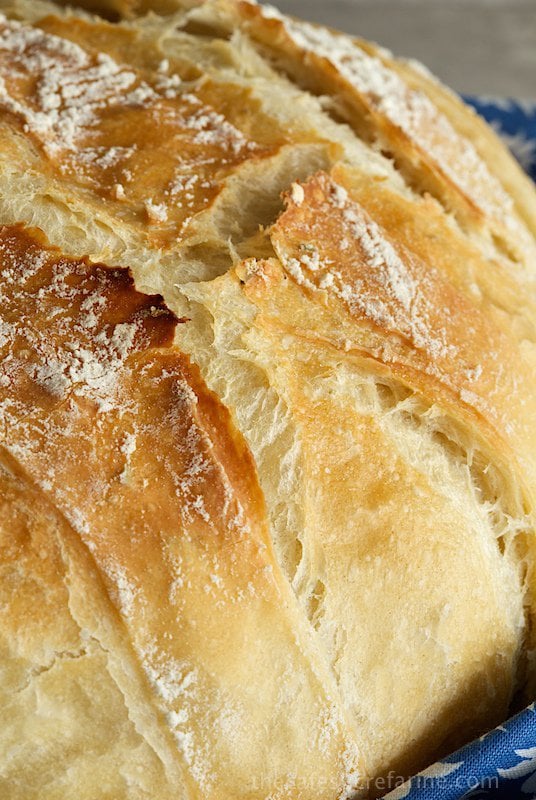

- 1 ⅓ cups warm water 320ml at 100-110˚F
- 2 ¼ teaspoons granulated yeast*
- 1 ½ teaspoons sea salt or 1 teaspoon regular salt.
- 1 tablespoon sugar
- 2 tablespoons extra virgin olive oil
- 1 tablespoon finely chopped fresh finely chopped herbs optional
- 1 cup 130g whole wheat flour**
- 2 ⅔ 330g cups all-purpose flour
-
Add warm water* to a large bowl. Stir in yeast and sugar and let sit for 4-5 minutes till mixture begins to bubble a bit and get foamy.
-
Add remaining ingredients and stir with a sturdy wooden spoon. (A Danish whisk works wonderful for mixing this dough and can be purchased online very inexpensively.) Stir vigorously until all flour is incorporated. This will only take a minute or two.
-
Cover bowl loosely with plastic wrap or a kitchen towel and allow to rest at room temperature until dough rises and collapses (or flattens on top), anywhere from 45 minutes to an hour. (It could take a little longer if your kitchen is cooler.)
-
While the dough is rising, take a 3-4-quart pot**** (with or without a handle******) and place on top of a piece of parchment paper. Trace a circle, slightly bigger than the bottom of the pot. Cut out circle and set aside.
-
Sprinkle the bottom of the pan with 2 teaspoons of flour. Spread out with your fingers if needed. Fit the parchment circle into the bottom of the pan and sprinkle another teaspoon of flour over the paper. This will keep your bread from sticking to the pan and parchment paper. Set pot aside aside.
-
Place ¼ cup flour on a dinner plate. Spread with your fingers to cover surface of plate with flour.
-
After dough has risen and collapsed, dump it out onto the floured plate. Flip several times to thoroughly coat dough with flour.
-
Shape into a smooth, flat ball by stretching the surface of the dough and tucking it underneath with the palms of your hands, rotating a quarter of a turn as you go. Dust with more flour from the plate as needed to prevent stickiness, but don't try to incorporate a lot of extra flour into the dough.
-
Preheat oven to 400˚F.
-
Transfer the ball of dough to the prepared pot and cover with lid. Let it rest for 30-40 minutes or until doubled in size.
-
Remove cover and sprinkle top of dough lightly with flour.
-
With a sharp knife make parallel cuts, 1 ½ inches apart across the top of the loaf. You can also cut an x (or just make little random cuts with a kitchen shears all over the top of the bread for a fun whimsical look.)
-
Place pot in oven with cover on. Bake for 30 minutes, then remove cover and continue baking another 15-25 minutes, or until bread is golden brown.
-
Allow to cool on a cooling rack, uncovered for 15 minutes. Remove bread by inverting onto a cooling rack. (If bread sticks to pan at edges, use a sharp knife to loosen any areas that are stuck.) Cool bread, right side up.
*The small yeast packets from the grocery store work fine but I prefer the yeast that you can purchase in bulk at the big box stores like Sam's, Costco, Bj's, etc. It's infinitely cheaper than buying yeast in the small packets and it's professional grade. I keep a small jarful in the refrigerator and freeze the rest. I've kept it in the freezer for up to a year and it will keep well in the refrigerator for several months.
** You can make this bread with entirely all-purpose flour. The whole wheat flour makes the loaf a bit more rustic. If you want to use all whole wheat flour, check out the Artisan Bread in 5-minutes website for adjustments that need to be made.
*** I use warm tap water. It should feel fairly warm to the touch but not so hot you need to pull your hand back.
**** Don't worry about the depth or width of the pot. As long as it will hold 3-4 quarts, you'll be fine. If it's a deep pot, your bread will be smaller and taller. If the pot is shallower and has a larger circumference, the finished loaf will be larger and not as tall.
***** If using a pot with a handle, be sure it's oven-safe to 400˚F.
I like to slice the bread then place it in a zip lock bag. You can pull out a few slices at a time or, for a wonderful dinner bread, place the whole loaf back into the same pot you used to bake it. Cover the pot and rewarm in the oven for 30 minutes at 350˚f. The bread will be wonderful crisp on the outside with a soft and chewy center.

Clara says
This is the best artisan bread recipe ever!! We make it 3 times a week and my 4-year-old son won't eat any other bread. I use the bread machine (dough setting) though, because I'm terrible at kneading. It comes out perfect every single time! Thank you so much!
Chris Scheuer says
Great to know! Thank you, Clara!